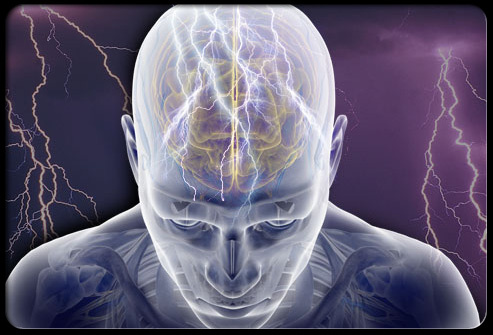 In the previous post i attempted to demystify seizures a bit, now i’ll just go into a little more detail without getting over technical of course.
In the previous post i attempted to demystify seizures a bit, now i’ll just go into a little more detail without getting over technical of course.
Some people with epilepsy experience a strange sensation before each seizure. This may include tingling, smelling an odor that is not actually there, or emotional changes. This is known as an aura. The person may have warning symptoms before the attack, such as:
- Fear or anxiety
- Nausea
- Vertigo (feeling as if you are spinning or moving)
- Visual symptoms (such as flashing bright lights, spots, or wavy lines before the eyes)
There are different types of seizures, and the type of seizure depends on the part of the brain that is affected.
- Absence (petit mal) seizure (staring spells)
- Generalized tonic-clonic (grand mal) seizure (involves the entire body, including aura, rigid muscles, and loss of alertness)
- Partial (focal) seizure (can involve any of the symptoms described above, depending on where in the brain the seizure starts)
- Some symptoms that may be seen during a seizure include
- Brief blackout followed by a period of confusion (the person cannot remember for a short time)
- Changes in behavior, such as picking at one’s clothing
- Drooling or frothing at the mouth
- Eye movements
- Grunting and snorting
- Loss of bladder or bowel control
- Mood changes, such as sudden anger, unexplainable fear, panic, joy, or laughter
- Shaking of the entire body
- Sudden falling
- Tasting a bitter or metallic flavor
- Teeth clenching
- Temporary stop in breathing
- Uncontrollable muscle spasms with twitching and jerking limbs
Testing in seizure cases
An EEG (electroencephalogram) is done to check the electrical activity in the brain. People with epilepsy often have abnormal electrical activity seen on this test. In some cases, the test may even show the area in the brain where the seizures start. However, the brain may appear normal after a seizure or between seizures.
Other Tests that may be done to identify the cause(s) of seizures include:
- Blood chemistry
- Blood sugar
- CBC (complete blood count)
- Kidney function tests
- Liver function tests
- Lumbar puncture (spinal tap)
- Tests for infectious diseases
Head CT or MRI scan often done to find the cause and location of the problem in the brain.
In some cases, no cause can be found. This is called idiopathic seizures. They are usually seen in children and young adults, but can occur at any age. There may be a family history of epilepsy or seizures.
Treatment
Treatment for epilepsy includes taking medicines, lifestyle changes, and sometimes surgery.
If epilepsy is due to a tumor, abnormal blood vessels, or bleeding in the brain, surgery to treat these disorders may make the seizures stop.
Medicines to prevent seizures, called anticonvulsants, may reduce the number of future seizures.
The type of anticonvulsant prescribed may depend on the type and frequency of seizures.
Dosage may need to be changed from time to time, and regular blood tests may need to be done to check for side effects.
It is important for known epileptics on treatment to always take their medicine on time and as directed. Missing a dose can cause them to have a seizure. Anticonvulsants should not be stopped without proper consultation and assessment by a doctor.
Some people with epilepsy may be able to reduce or even stop their anti-seizure medicines after having no seizures for several years. Certain types of childhood epilepsy go away or improve with age, usually in the late teens or 20s.
Many epilepsy medicines cause birth defects. Women who plan to become pregnant should tell their doctor in advance in order to adjust medicines.
Also, lifestyle or medical changes can increase the risk of a seizure in adults and children with epilepsy. Examples include:
- New prescribed drugs, vitamins, or supplements
- Emotional stress
- Illness, especially infection
- Lack of sleep
- Pregnancy
- Skipping doses of epilepsy medications
- Use of alcohol or other recreational drugs
People with poorly controlled epilepsy should not drive. Also people with new onset seizures must not drive until they are seizure free for at least 6 months. Also they must not use machinery or do activities that can cause loss of awareness, such as climbing to high places, biking, and swimming alone.
In many cases, epilepsy is a lifelong condition. In these cases, anti-seizure drugs need to be continued. And most of these patients are able to live a normal life as there is a very low risk of sudden death with epilepsy.
Prevention
There is no known way to prevent epilepsy. Proper diet and sleep, and staying away from illegal drugs and alcohol may decrease the likelihood of triggering seizures in people with epilepsy.
There is also a hereditary component to epilepsy as it tends to run in families.
Finally we must all remember to avoid treating people with seizures with any form of stigma and instead apply all the information available in these posts to keep them from harming themselves during an active seizure and help them seek the necessary help to prevent future seizures.






